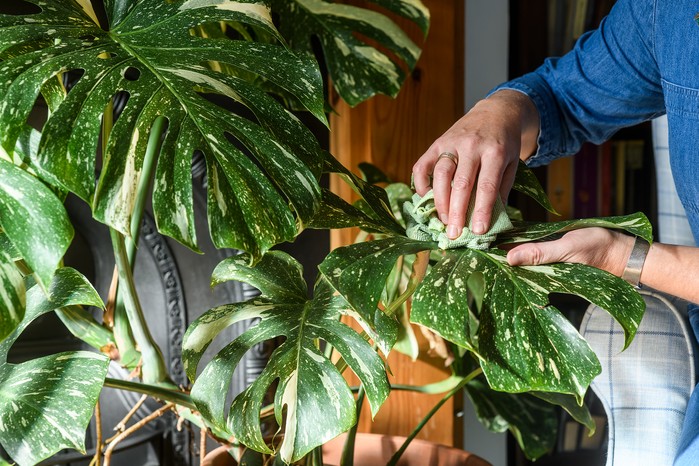Few indoor plants make a statement like the Monstera deliciosa, also known as the Swiss cheese plant. With its large, glossy leaves and distinctive natural holes (fenestrations), this tropical beauty has become a favorite in homes from New York to London to Toronto. But while it looks exotic, learning how to grow a monstera plant successfully at home is easier than you think. With the right care, your monstera will thrive, bringing vibrant greenery and a touch of the jungle into your space.Why Grow a Monstera Plant?Air purifying: Like many houseplants, monsteras help improve indoor air quality.Statement décor: Their dramatic leaves instantly elevate interior design.Easy care: Monsteras are surprisingly forgiving, perfect for beginners.Longevity: With proper care, they can live for decades.Ideal Growing ConditionsLightMonsteras love bright, indirect light. Direct sunlight can scorch the leaves, while too little light slows growth. A spot near an east- or south-facing window with filtered light is ideal.Temperature & HumidityBeing tropical plants, they thrive in 65–85°F (18–29°C). They also prefer higher humidity, so misting leaves or placing a humidifier nearby will boost growth.SoilUse a well-draining potting mix rich in organic matter. A blend of peat moss, perlite, and orchid bark works well to mimic its natural rainforest environment.Watering NeedsConsistency is key: Water when the top 1–2 inches of soil feels dry.Avoid soggy soil: Monsteras don’t like standing in water, so ensure pots have drainage holes.Winter care: Reduce watering slightly when growth slows.Feeding Your MonsteraFertilize every 4–6 weeks during spring and summer with a balanced liquid houseplant fertilizer. In fall and winter, reduce feeding since growth naturally slows down.Training and SupportMonsteras are natural climbers. As they grow, they may need support:Moss poles or trellises help them climb.Pruning keeps the shape manageable and encourages new growth.Cuttings from pruning can be propagated in water or soil to grow new plants.Common Issues and FixesYellowing leaves: Usually caused by overwatering. Let soil dry slightly before watering again.Brown leaf edges: Often due to low humidity—mist leaves or use a humidifier.No leaf splits (fenestrations): Plant may need more light or time to mature.Pests (spider mites, scale): Wipe leaves with a damp cloth and treat with insecticidal soap if needed.Propagation TipsOne of the joys of owning a monstera is propagating it:Choose a healthy stem with at least one node (the small bump where roots form).Cut just below the node using sterilized scissors.Place the cutting in water or moist soil until roots develop.Transplant into a pot when roots are strong.Styling Ideas for Your MonsteraPlace in a decorative ceramic pot to make it a room centerpiece.Train it along a tall moss pole for a dramatic vertical look.Pair with smaller plants like pothos or snake plants for a layered jungle vibe.ConclusionBoosting your plant care game by learning how to grow a monstera plant is worth the effort. With the right light, water, and a bit of love, your monstera will reward you with stunning, tropical foliage that transforms any room. Whether you’re in the US, UK, or Canada, this plant adapts beautifully to indoor life and adds a touch of green elegance to your home.So, if you’re ready to bring a piece of the rainforest indoors, start growing your monstera today—and watch it flourish into the centerpiece of your plant collection.

